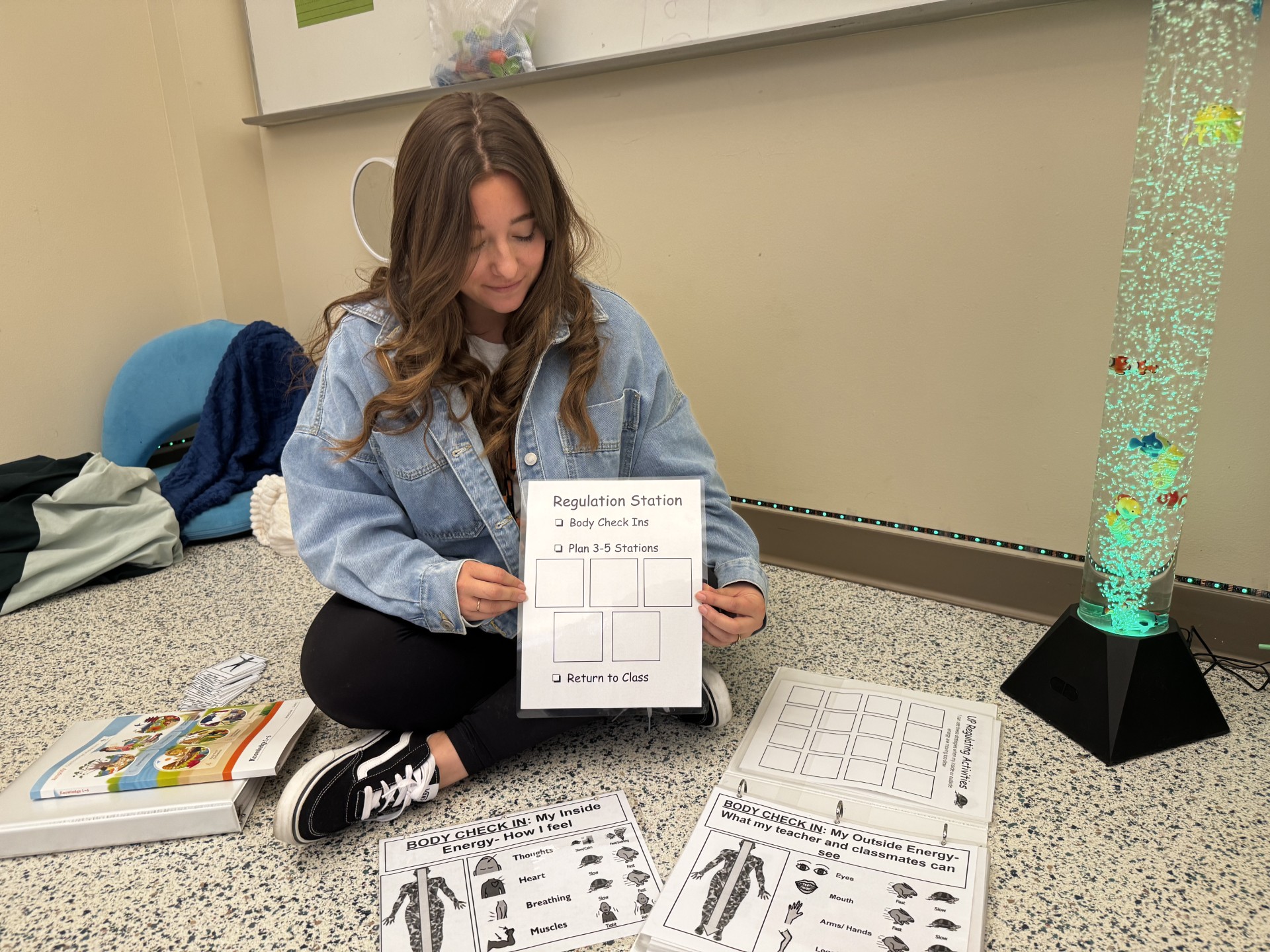When most educators hear “occupational therapy” or “OT,” they think of individualized services outside of the classroom. Maybe they know that the “OT” is helping a student with fine-motor skills, self-regulation, or adaptive equipment. While these supports are crucial, they represent only a fraction of what occupational therapists, called OTs for short, can bring to schools.
Environments can often shape innovation. For a small school district, employing a full time OT is a big commitment and often schools in general minimize the impact in the classroom by outsourcing those services to a third-party. What if we reimagined their role? What if OTs were part of shaping classrooms and school environments to promote engagement, belonging, and success for all students? What if an OT’s impact went well beyond those 1:1 services for selected students?
At Green Island UFSD in New York, we put that idea into practice. Instead of limiting our OT, Rachel Anuszewski, M.S. OTR/L, to traditional pull-out services, we invited her to join in collaborating with teaching teams during our Professional Learning Community (PLCs) meetings. What started as small group instruction during intervention time to work on hand writing skills, has evolved into co-constructing a process of improvement including walkthroughs of classrooms and feedback. The impact on the school environment, classrooms and the shifting of professional viewpoints has been transformational.
Seeing Classrooms Through a Different Lens
Academically trained people often look at classrooms with an eye toward instruction: Are students engaged? Is the lesson aligned to standards? Is the pacing effective? Elementary teachers especially love to utilize Pinterest to decorate with themes and colors. An OT, however, brings a unique lens, one trained to notice how the environment affects attention, behavior, and emotional regulation. We utilized an evidence-based tool, the Classroom Sensory Environment Assessment (CSEA), which was developed for K–5 classrooms, to help evaluate and optimize sensory features of the environment, especially to support students with autism in general education settings.
During walkthroughs, our OT pointed out things we had long overlooked. Some walls were painted in bright, overstimulating colors that made it harder for students to focus. Certain room layouts created visual distractions or traffic flow problems. When teachers had time to reflect on this information they realized the traffic flow problems often led to classroom management problems. Decorations, though well-intentioned, sometimes overwhelmed rather than supported students’ ability to self-regulate or even focus. Seeing your classroom through the students’ eyes is extremely important for maximizing their impact on learning.
This feedback led us to implement concrete changes: repainting walls in calming tones; rearranging furniture for better flow; rethinking how classrooms were decorated. These adjustments didn’t just make rooms “look nicer.” They directly affected how students engaged with learning, how teachers managed transitions, and how the whole school environment supported belonging.
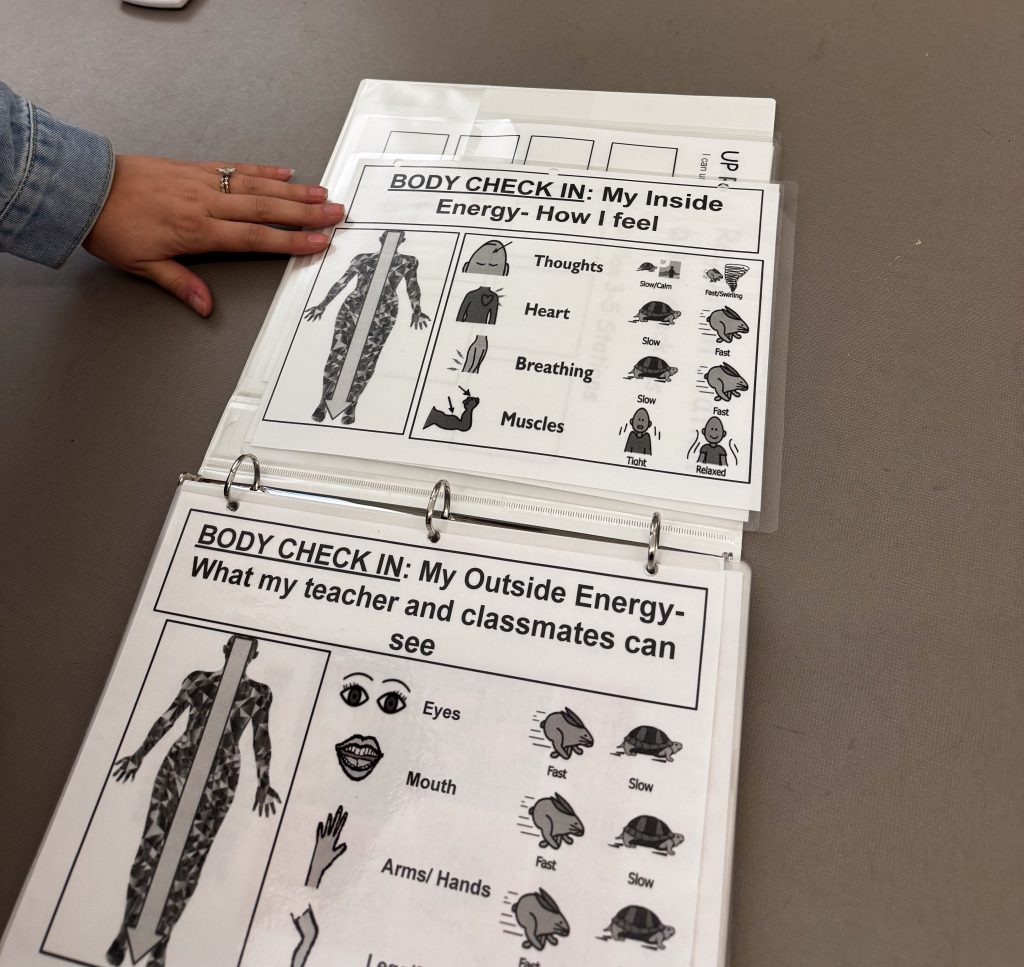
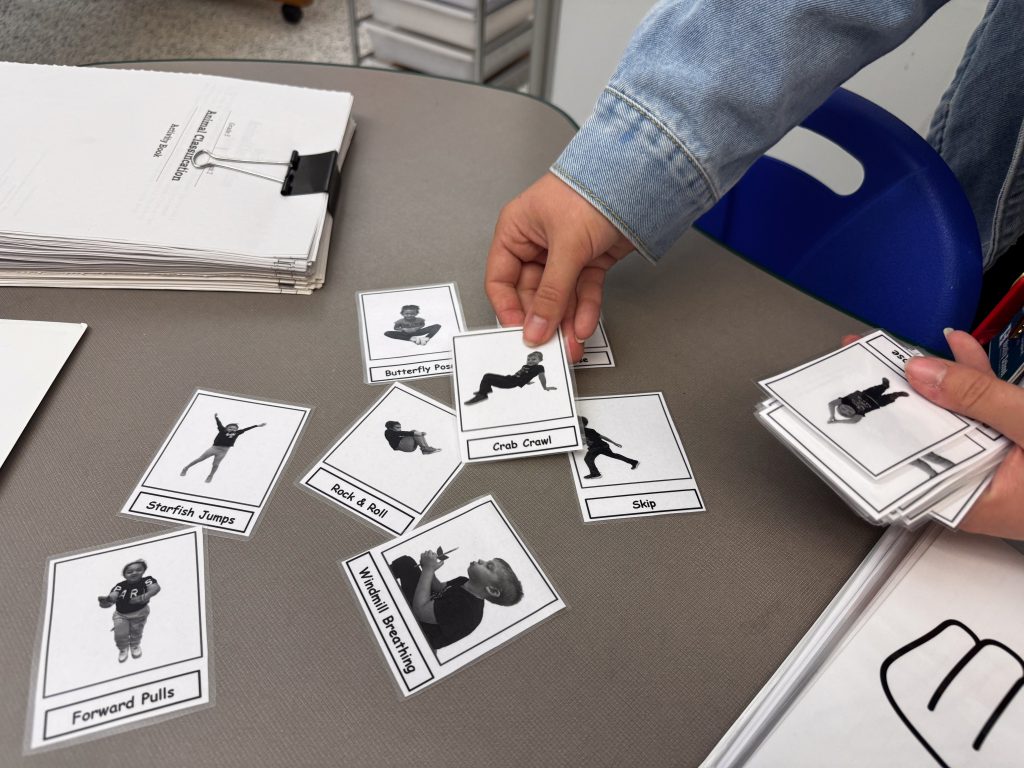
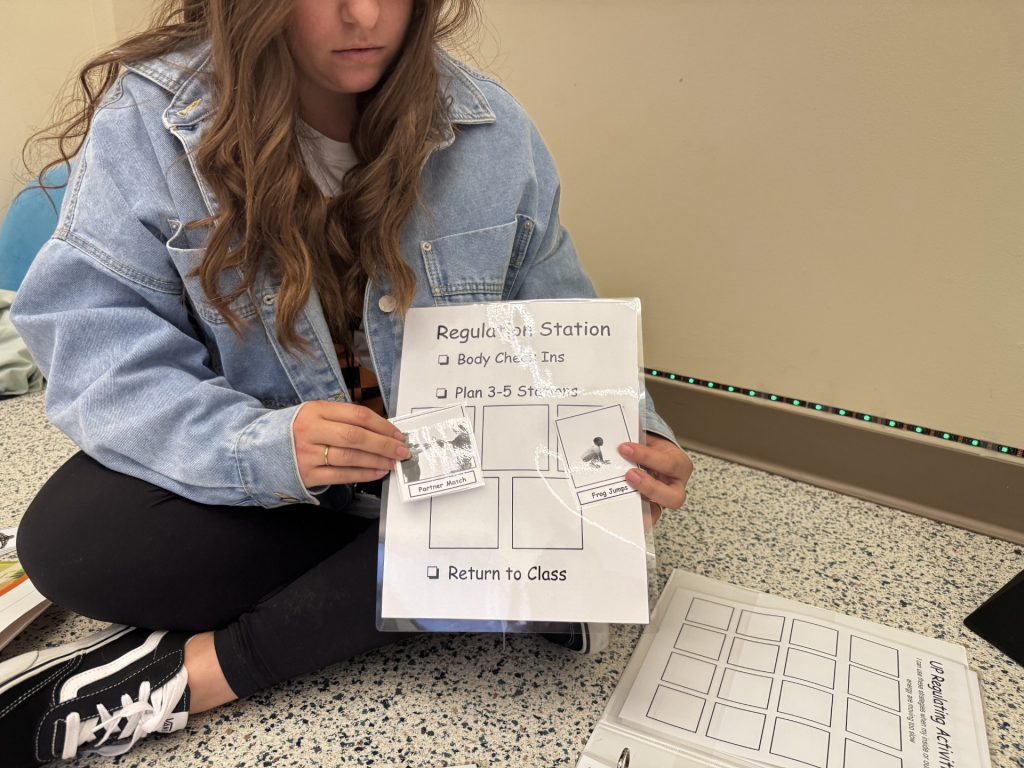
Why This Matters
Every district employs occupational therapists. Yet in many schools, their expertise is siloed. School OTs may provide mandated services for students with disabilities, but remain absent from broader conversations about instruction and school culture. That’s a missed opportunity. “Our OT has helped us rethink the classroom environment in ways that make learning more accessible for every child. She is just as much a part of the collaborative planning process as any other professional in the building, and her support has transformed how we set up our spaces, design routines, and meet the diverse needs of our students”, Sarah Lawlor-Primary Grades PLC+ Activitator and Instructional Coach.
These collaborations are not limited to Primary grades. Even middle school students can benefit. “Including our OT Rachel in our middle school PLC brings insight into how motor skills, sensory needs, and executive functioning directly affect learning and participation. Their perspective strengthens instruction, interventions, and school culture so that all students—not just those with IEPs—benefit”, Jenny Starr Middle Grades PLC+ Activitator and NYS Master Teacher.
As schools work to create a sense of belonging and address rising behavioral challenges, they need every available tool. OTs bring specialized training that can influence the structural school environment.
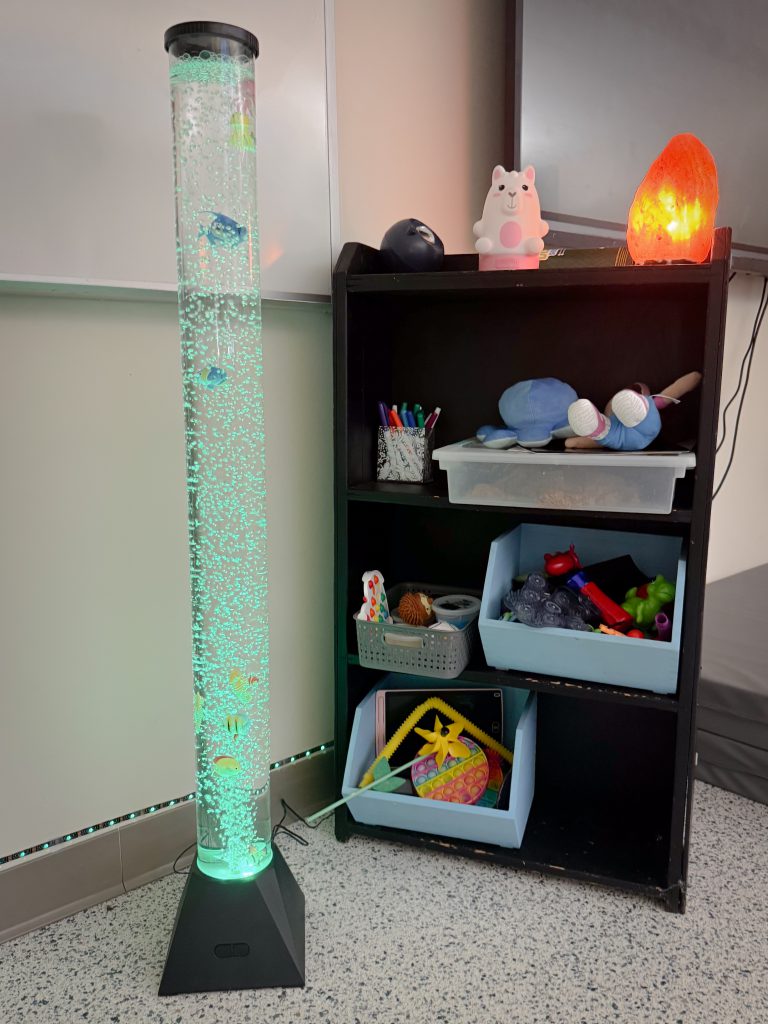
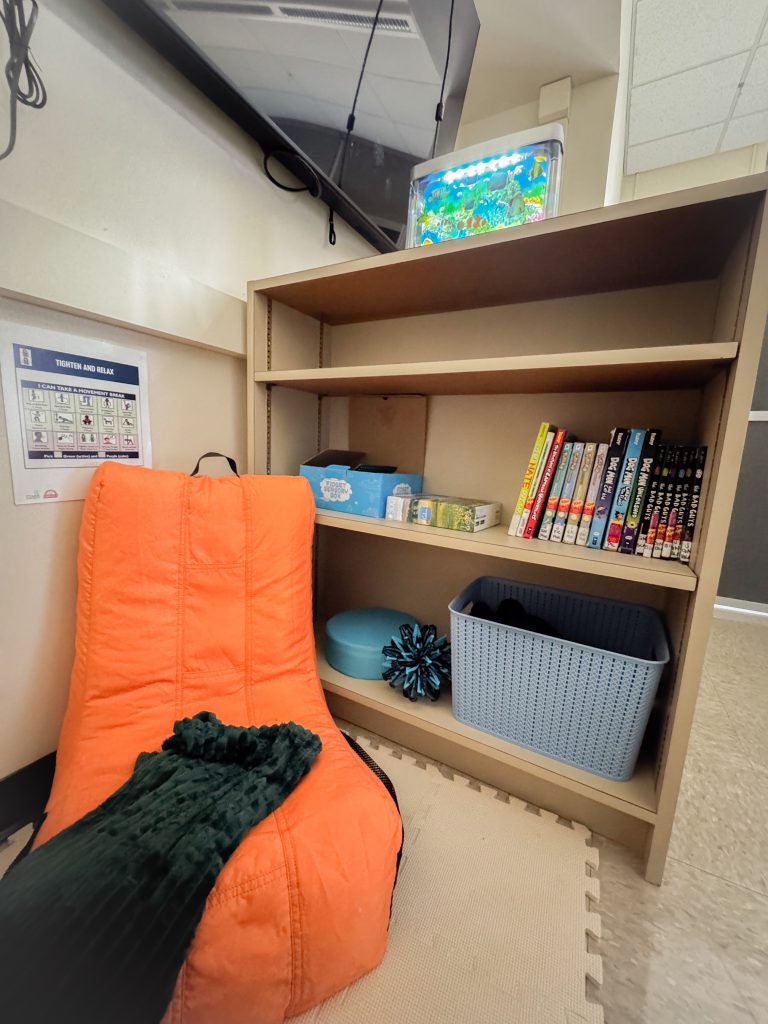
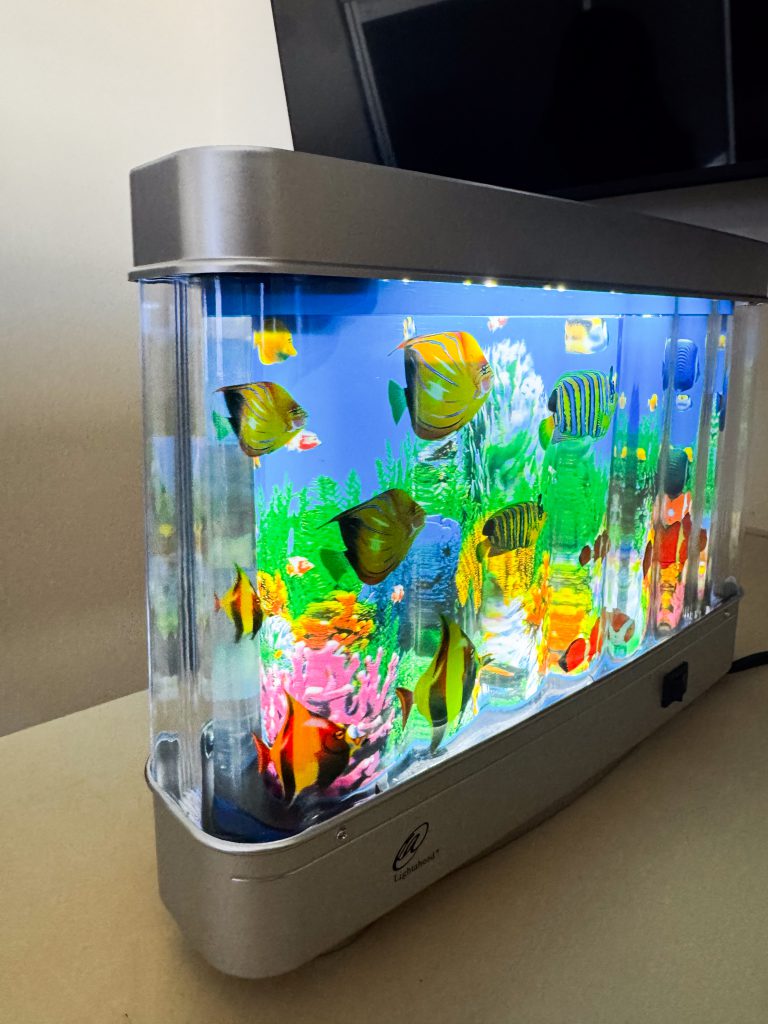
The above photos show a regulation station in the OT classroom, a regulation station in a regular classroom, and a sensory fish tank.
A Call to Action
Too often, schools overlook the expertise already in their buildings. Occupational therapists are not just specialists for a few students. They can be potential changemakers for entire schools. By broadening their role, districts can redesign classrooms so they foster focus, belonging, and engagement for all learners.
Our OT, Rachel Anuszewski, M.S. OTR/L summarized the movement perfectly:
“Moving from a siloed model of direct, individualized intervention to a collaborative, systems-level approach has fundamentally shifted my role as an occupational therapist in the district. By engaging in structured collaboration with teachers and staff, I am able to address sensory and regulatory needs across Tiers 1, 2, and 3, shaping classroom environments that proactively support all learners while still providing targeted interventions when needed.”
This shift not only enhances student outcomes but also fosters sustainability by embedding occupational therapy practices into daily routines and instructional strategies.
Rachel went on to state, “The framework of occupational therapy extends far beyond fine motor, visual motor, or sensory motor skills—it is rooted in understanding the student as a whole person, assessing where they are, and supporting them in engaging in the occupations they need and want to do.”
If schools want to create environments where every student thrives, it’s time to look beyond traditional roles.
A district-wide collaborative model allows occupational therapy to operate at its fullest capacity, maximizing impact on both individual students and the broader learning community. The opportunity for OTs to be invited into broader conversations and decision-making at the district level has been equally meaningful.
“Being regarded as a valued contributor to the educational team reinforces the importance of occupational therapy in advancing inclusive, responsive, and whole-child approaches to learning”, says Rachel Anuszewski, our own highly-valued OT.
This video shows a sensory item in the classroom regulation station to help children self-regulate.
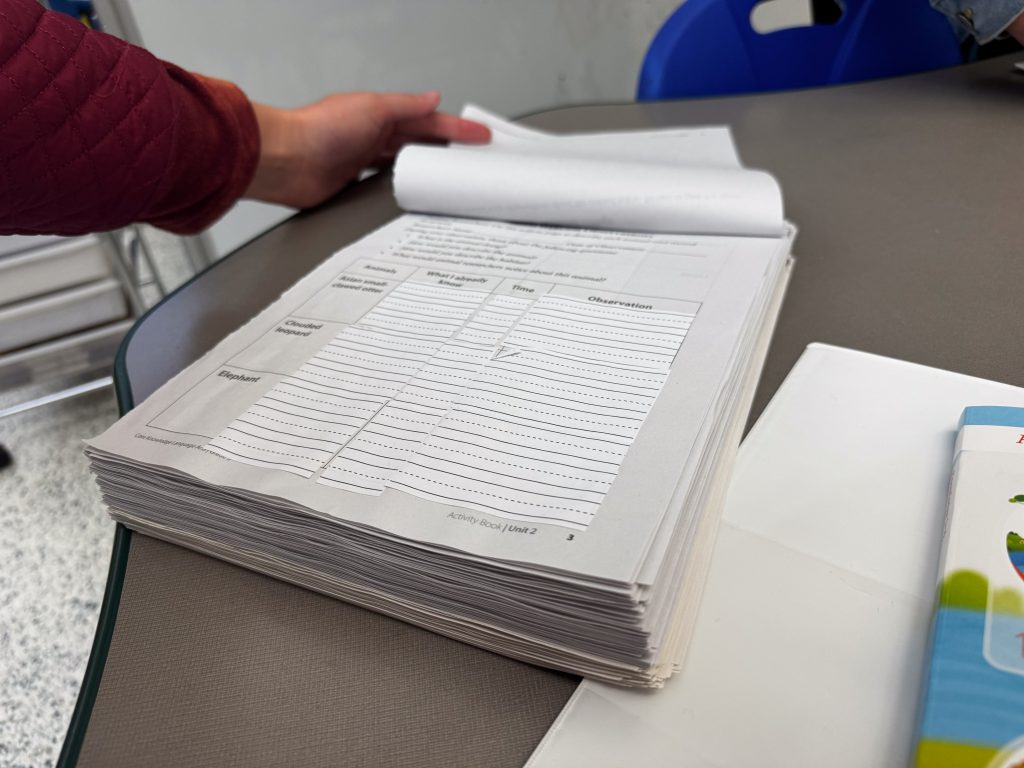
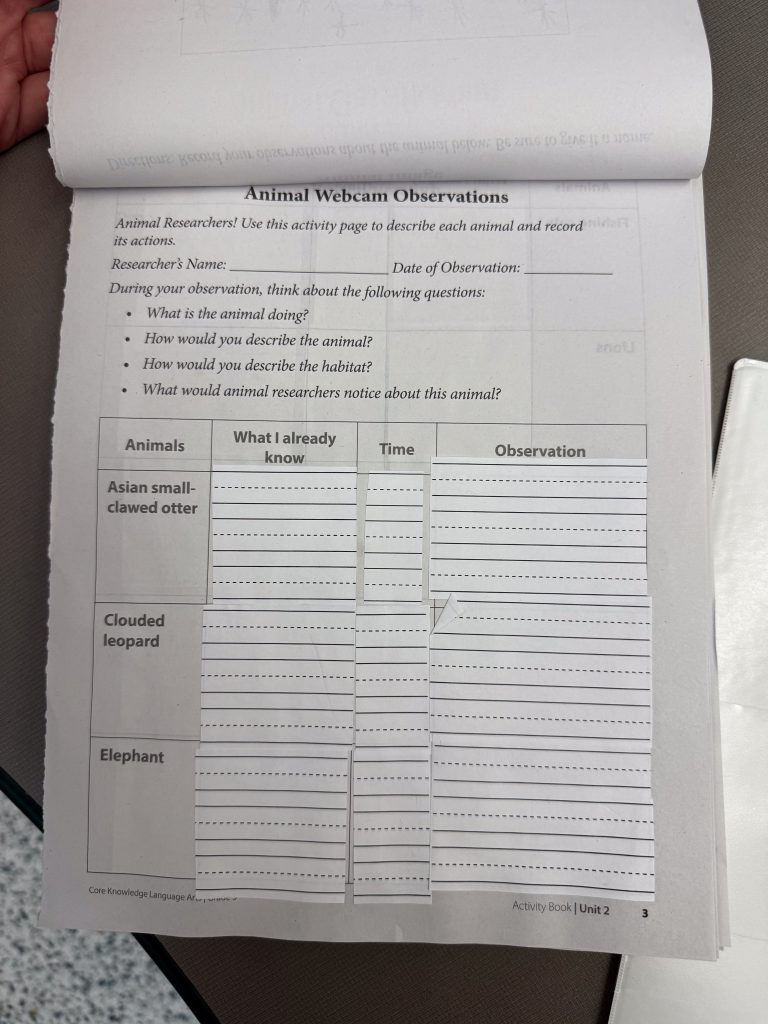
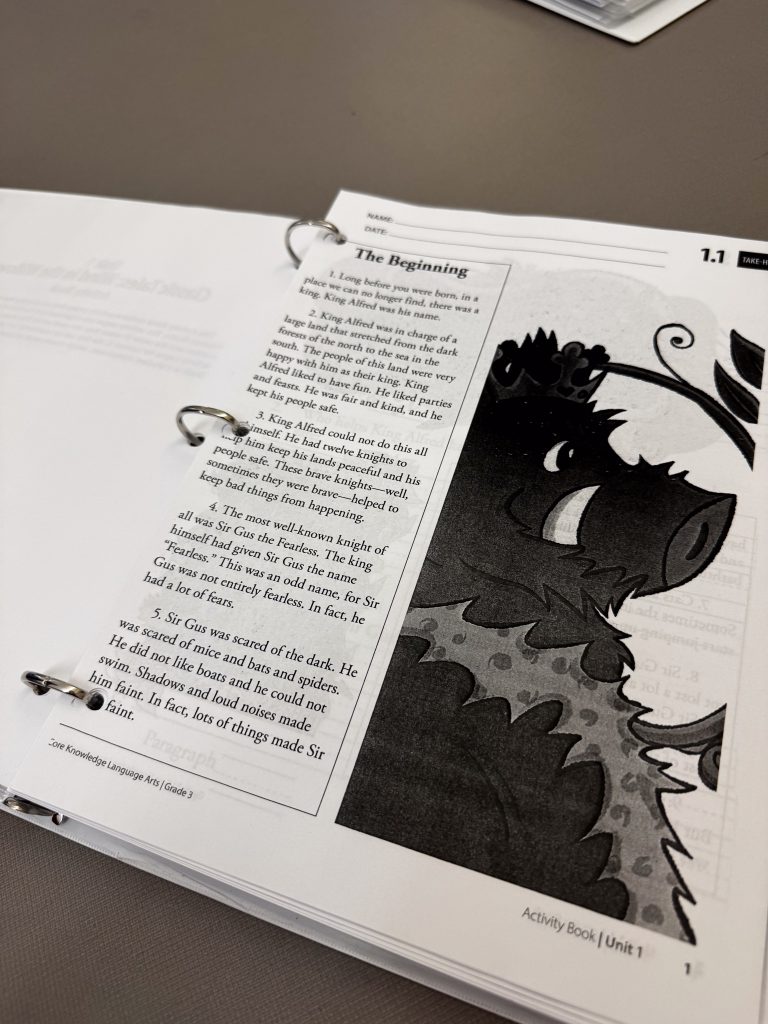
These photos show Rachel’s method of converting a typical activity book into a sensory-friendly layout to assist with handwriting, visual and/or fine motor needs of students.
